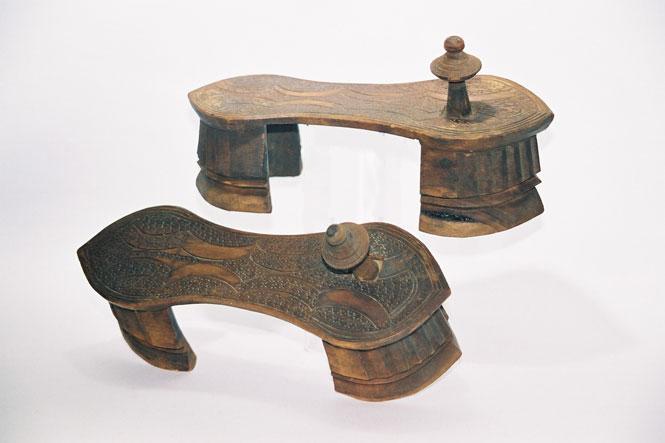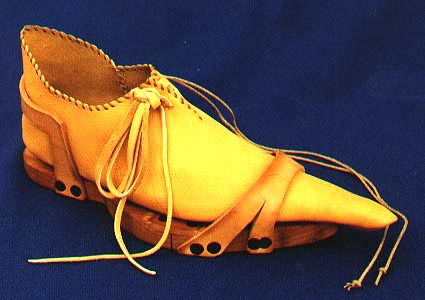Let me introduce you to Diya Mathur. She's a tall, thin supermodel in love with life...and with the Beast since she was 11. A ditzy, darling of a diva, her one obsession besides the Beast is Shoes. She's a Sole Sista and in this blog, she's going to educate you on a thing or two about SHOES.
A brief history of the SHOE by Dee-Dumbs: note that I'm more stimulated by visuals than prose, hence, I'll post more pics than pratter.
 8000 BC: worn as a protection against the elements as Earth was pretty much a slowly thawing glacier then.
8000 BC: worn as a protection against the elements as Earth was pretty much a slowly thawing glacier then.3000 BC: In ancient Egypt, braided papyrus was molded into soles from sole prints taken in the sand. Can't say they were not ingenious.
The paduka from ancient India. Hey! We had platform heels back in the Epic Age too. These are a bridal pair and I must say, the wearer had muscular toes to keep those on and not fall on her face.
Sandals (and a war boot?) used by Egyptians and Romans and Greeks.
The next big innovation in shoes came around the 4th Century AD. Shoes are sewn inside out and then turned for use, so that the stitching is now hidden. Shoe-making materials also improved, not only leather and tree bark, now silk and brocade and velvet was stamped in.

 Then there were shoes to be worn over shoes, strangely, called pattens. And the Duck Bills for men that would reveal their colored hose through the leather.
Then there were shoes to be worn over shoes, strangely, called pattens. And the Duck Bills for men that would reveal their colored hose through the leather.Influenced by the Middle Eastern culture, the poulaines were popular during the Crusades.

Another ancestor of the platform, the chopine shoe was meant to be worn over your slippers to give the person height and of course, glamour. We're in 1500 AD here.
Boots became fashionable in England in the 1600s when a shoemaker designed a boot for the reigning monarch to hide his "rickety" legs.
And then the shoe industry got better and better and better...















diffuser attached, but not before giving the hair enough time to dry on its own. When youhttp://www.vohair.com are done with drying, use silk top wigs human hair a light hold spray and you will have frizz-free hair for the rest of the day!It requires a lot of time and patience to dry all your tresses completely.silk lace wig A good decision would be to wash it the night before and let it air dry. The next morning, you will take up less time to brush or style it.2. Invest in quality tools and styling products Investing in quality tools is an essential step to manage a crop of thick and wavy tresses. This is one area where you just can t compromise!
ReplyDelete